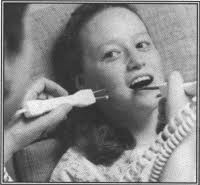Introducing You to Microcurrent:
Electrical therapy is one aspect of the Physiotherapist’s arsenal that is often overlooked; this may be due to cost, training, patients or confidence in the therapeutic properties. From a patient’s perspective, pain therapy or neuromuscular stimulation can be seen as effective because the patient can feel the electricity creating involuntary sensations and contractions in the body. What if the amplitude was so small the patient could not perceive the electricity flowing through them? Could healing be accelerated without the patient even feeling their treatment?
Microcrurrent electrotherapy, as the name suggests involves the patient being treated with extremely small electrical currents in an attempt to illicit a physiological effect (Morgareidge & Chapman. 1990). Microcurrent therapy involves the use of low-intensity direction current stimulation that is generally applied with the aide of electrodes directly to the patient’s skin. A number of possible mechanisms have been proposed to explain microcurrent’s beneficial effect on tissues. This includes the hypothesis that the current mimics that produced by an injured cell to stimulate a healing response of tissue repair and regeneration (Sugimoto et al., 2012), or, stimulation of the C-axons of the skin, which are sensitive to gentle touch and pressure, can also occur and result in feelings of pleasure and relaxation in the patient (Tan et al., 2006).
Due to the gentle nature of the current, it can be used for many reasons on a variety of locations and systems throughout the body. Evidence has suggested it is useful in everything from pain relief and healing to motor re-education and neuron conductivity. For a more detailed explanation of evidence and uses please continue on to the quality and quantity of research section further on in this blog.
Despite microcurrent being used for many decades the application, settings and safety is not known or understood by all practitioners. So, before giving this form of eStim a crack, be
sure to read the rest of the blog to
learn all you need to know.
References:
Morgareidge, K., & Chipman, R. (1990). Microcurrent Therapy. Physical Therapy Today, Spring, 50-53.
Images:
http://www.east-westseminars.com/blog/2010/07/peripheral-neuropathy-treatment-video/ accessed 01/04/2012
http://www.patriciapilot.com/microcurrent-facial-microcurrent-face-lift-microcurrent-facelift-805-636-6522 accessed 01/04/2012
http://www.eileenhenry.com/articles/microcurrent.html accessed 01/04/2012
http://drcarol.tripod.com/InfoPat/microcur.htm accessed 01/04/2012




Good start People. I like your heading. One of the points you should make in a future post is the clear advantages for electrical safety from small sized currents. Then move to the question of whether or not that advantage carries any weight against the perceived disadvantage of stim that is below the sensory and motor thresholds. CY
ReplyDeleteP.S. I was hoping that for this topic students would canvas some of the really 'out-there' uses of microcurrent by complementary practitioners. Please offer readers some images of various MC devices too. thanks CY
ReplyDelete